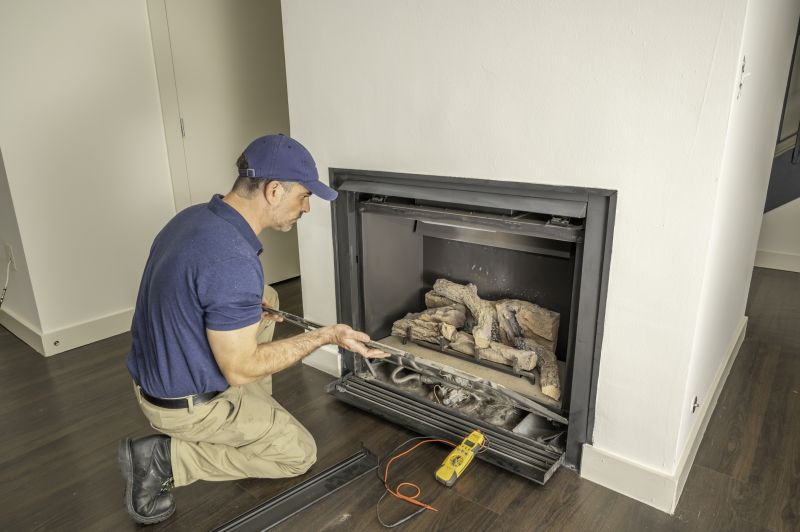Popular Fireplace Masonry Service Equipment You Need to Know
Explore the most reliable products used by experts to achieve flawless and long-lasting fireplace masonry installations.
 Fireplace masonry service encompasses a range of specialized products designed to maintain, repair, and enhance the durability and appearance of masonry fireplaces. These products are essential for addressing common issues such as cracked or deteriorated mortar, damaged bricks, and overall structural integrity. Selecting the right materials ensures safety, longevity, and visual appeal of your fireplace. Whether performing minor repairs or complete rebuilds, having access to quality products is crucial for professional or DIY projects.
Fireplace masonry service encompasses a range of specialized products designed to maintain, repair, and enhance the durability and appearance of masonry fireplaces. These products are essential for addressing common issues such as cracked or deteriorated mortar, damaged bricks, and overall structural integrity. Selecting the right materials ensures safety, longevity, and visual appeal of your fireplace. Whether performing minor repairs or complete rebuilds, having access to quality products is crucial for professional or DIY projects.
Top Overall Option
High-Temperature Masonry Repair Kit
A comprehensive high-temperature masonry repair kit offers a selection of heat-resistant mortars, sealants, and tools designed for effective fireplace masonry restoration. These kits provide all-in-one solutions suitable for various repair needs, ensuring compatibility with existing masonry materials and durability under extreme temperatures.
Types of Products For Fireplace Masonry Service
Refractory Mortar
Heat-resistant mortar designed for lining and repairing fireplaces and chimneys, capable of withstanding high temperatures.
Fireplace Sealant
High-temperature sealants used to fill cracks and gaps, preventing heat loss and structural damage.
Brick Repair Mortar
Specialized mortar for restoring damaged or cracked bricks in masonry fireplaces.
Chimney Cleaning Brush
Heavy-duty brushes designed for cleaning soot and creosote buildup in chimneys and flues.
Fireplace Trowel
Essential tool for applying and smoothing mortar during masonry repairs.
Heat-Resistant Paint
Specialized paints formulated to withstand high temperatures and enhance the appearance of masonry surfaces.
Masonry Cleaning Solution
Cleaning agents designed to remove soot, stains, and grime from masonry surfaces without damaging them.
Fireplace Grout
A durable grout used for filling joints between bricks and stones in fireplaces.
Chimney Cap
Protective cap installed at the chimney top to prevent debris, animals, and water ingress.
Mortar Rake
Tool used to remove old or damaged mortar from between bricks or stones.
Fireplace Door Gasket
High-temperature gasket material for sealing fireplace doors and maintaining efficiency.
Chimney Waterproofing Sealant
Sealant designed to protect chimney masonry from water penetration and weather damage.
Firebrick
Refractory bricks used to line the interior of fireplaces for heat resistance and durability.
Smoke Chamber Liner
Liner material used to reinforce or replace the interior of the smoke chamber for safety and efficiency.
Chimney Damper
Device installed to control airflow and improve fireplace efficiency.
Fireplace Hearth Pad
Protective pad or tile placed in front of the fireplace to prevent heat damage to flooring.
Popular Choices
Widely used for high-temperature repairs and lining fireplaces, available in various formulations.
Commonly selected for sealing cracks and gaps to improve safety and efficiency.
Popular for interior lining and repair due to its heat resistance and durability.
Frequently used tool for routine chimney maintenance and soot removal.
Chosen for aesthetic restoration and protection of masonry surfaces exposed to high heat.
Popular accessory to prevent debris and water ingress, extending chimney lifespan.
Essential for removing old mortar during restoration projects.
Commonly replaced to improve fireplace efficiency and safety.
Frequently selected to protect masonry from water damage and weathering.
Popular for creating a durable and heat-resistant surface in front of the fireplace.
Masonry repair products include a variety of mortars, sealants, and cleaning agents that are formulated to withstand high temperatures and weather conditions. Proper preparation and application of these products can help prevent further deterioration and extend the life of the fireplace. Additionally, specialized tools and accessories such as trowels, brushes, and cleaning sponges facilitate precise work and efficient results. It is important to choose products compatible with existing masonry materials to achieve optimal adhesion and performance.
Maintaining a fireplace’s masonry involves regular inspections and timely interventions. Products like refractory cement and heat-resistant sealants are commonly used to fill cracks and gaps, ensuring the structural stability of the fireplace. For aesthetic improvements, options such as decorative mortar and brick stains are available to restore or enhance the visual appeal. When selecting products, consider factors like temperature resistance, compatibility with existing materials, ease of application, and long-term durability to ensure effective and safe repairs.
Professional masonry services often rely on a comprehensive selection of these products to deliver quality results. Homeowners interested in DIY repairs should prioritize user-friendly options with clear instructions and reliable performance. Properly maintained masonry not only improves the safety and function of a fireplace but also contributes to the overall aesthetic of the living space. Investing in the right products can make a significant difference in the success and longevity of masonry projects.
Key Buying Considerations
- Temperature resistance and heat durability of the product.
- Compatibility with existing masonry materials and surfaces.
- Ease of application, including drying and curing times.
- Long-term durability and resistance to weathering or cracking.
- Suitability for specific repair needs, such as crack filling or surface restoration.
- Safety features, especially when working with high-temperature materials.
- Availability of matching colors or finishes for aesthetic consistency.
- Ease of cleaning and maintenance after application.
- Environmental conditions, such as exposure to moisture or temperature fluctuations.
- Professional vs. DIY suitability based on complexity of repair.
- Manufacturer recommendations and product certifications.
- Cost-effectiveness relative to project scope and materials needed.
- Availability of tools and accessories for application and repair.
- Brand reputation and customer reviews for reliability.
- Vapor permeability and breathability of repair products to prevent moisture buildup.
